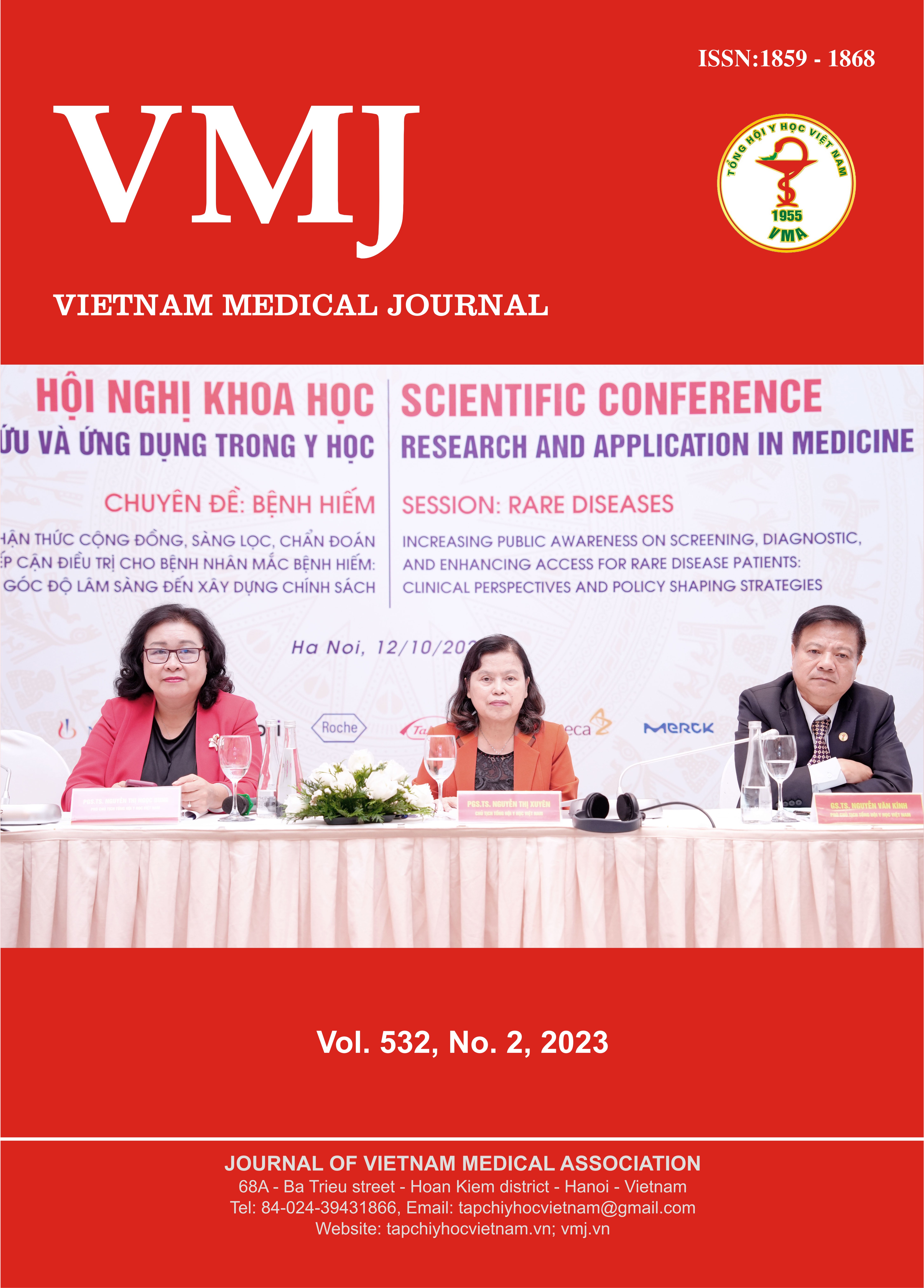DIAGNOSTIC MODEL OF TALAROMYCOSIS IN HIV/AIDS PATIENTS
Main Article Content
Abstract
Introduction: Talaromycosis (formerly penicilliosis), one of the most important opportunistic infections in Southeast Asia, is a common cause of HIV-AIDS-associated death. The current diagnosis of Talaromyces marneffei relies on culture. As microbiological results are often late, taking up to 14 days for pathogens isolation, the mortality rate is high. Serum Mp1p ELISA test was used to determine an earlier diagnosis of Talaromycosis. The research objectives were: (1) to determine the cut-off value, sensitivity, and specificity of the Mp1p ELISA test in AIDS patients; (2) to develop diagnostic models (with and without Mp1p ELISA test) of talaromycosis in AIDS patients. Methods: A descriptive cross-sectional study. HIV-infected patients aged ≥18 years with TCD4 <100 cells/mm3 admitted to Ward E, Hospital for Tropical Diseases from June 2017 to July 2019 were recruited. Data analysis using SPSS 25.0 software. A receiver operating characteristic (ROC) curve and Youden index on the ROC curve was used to determine the cut-off value. The area under the ROC curve (AUC) and the 95% confidence intervals (CIs) were used to determine the discrimination power between cases and controls. Chi-square test, odds ratio (OR), and 95% confidence interval were used to find associations among variables. After multivariate analysis, the model of talaromycosis diagnosis was built by Monogram in R.3.6.3 software. Results: 533 patients meeting the inclusion criteria were enrolled. 78.4% were male; the median age was 34 years (IQR: 29-40), and 77.5% were <40 years-old groups. 70 patients diagnosed with Talaromycosis were compared with other opportunistic infected participants (OIs).. The maximum Youden index=0,856 in correlation with the 0,22 OD cut-off value of serum Mp1p presents the highest sensitivity and specificity, with SEN = 88.6% and SPE = 97.0%, respectively. Two models (with and without serum Mp1p) were built based on the adjusted OR of risk factors. Two models based on living areas, skin lesions, low platelet, and Mp1p result. The two models have high accuracy in diagnostic talaromycosis. The SEN and SPEC of the model without Mp1p were 68.6% and 98.1%, and the SEN and SPEC of the model with Mp1p were 85.7% and 98.7%. Recommendation: Serum Mp1p ELISA as well as Diagnostic models of talaromycosis are considered as novel tools for early diagnosis of Talaromycosis in AIDS patients.
Article Details
Keywords
HIV/AIDS, TCD4, Talamomyces marneffei, Talaromycosis, Mp1p ELISA, cut-off value, diagnostic model.
References
2. Cao Ngọc Nga, Nguyễn Lê Như Tùng, Phan Thị Hải Mến, Nguyễn Duy Phong, "Nhiễm khuẩn huyết do vi nấm P.Marneffei ở bệnh nhân AIDS". Tạp chí Y học Thành phố Hồ Chí Minh, 2011, 15, . tr 15 - 20.
3. Kawila R., Chaiwarith R., Supparatpinyo K., "Clinical and laboratory characteristics of penicilliosis marneffei among patients with and without HIV infection in Northern Thailand: a retrospective study". BMC Infect Dis, 2013, 13, pp. 464.
4. Le Thuy, "Penicillium marneffei Infection - a Putative Zoonosapronotic Disease in Regional Hotspots: Results of a Case-Control study in Vietnam". Ph.D. thesis, Kellogg College, 2015, pp. 82-112.
5. Thu N. T. M., Chan J. F. W., Ly V. T., Ngo H. T., Hien H. T. A., et al., "Superiority of a Novel Mp1p Antigen Detection Enzyme Immunoassay Compared to Standard BACTEC Blood Culture in the Diagnosis of Talaromycosis". Clin Infect Dis, 2021, 73 (2), pp. e330-e336.
6. Thuy Le Marcel Wolbers, Nguyen Huu Chi, Vo Minh Quang,2 Nguyen Tran Chinh, Nguyen Phu Huong Lan, Pham Si Lam, Michael J. Kozal, Cecilia M. Shikuma, Jeremy N. Day and Jeremy Farrar, "Epidemiology, Seasonality, and Predictors of Outcome of AIDS-Associated Penicillium marneffei Infection in Ho Chi Minh City, Viet Nam". Clin Infect Dis, 2011, 52 (7), pp. 945-952.
7. Wang Y. F., Cai J. P., Wang Y. D., Dong H., Hao W., et al., "Immunoassays based on Penicillium marneffei Mp1p derived from Pichia pastoris expression system for diagnosis of penicilliosis". PLoS One, 2011, 6 (12), pp. e28796.
8. Wong S. Y. N, Wong K. F, "Penicillium marneffei infection in AIDS. ". Pathology Research International. , 2011, Volume (Article ID 764293.).


